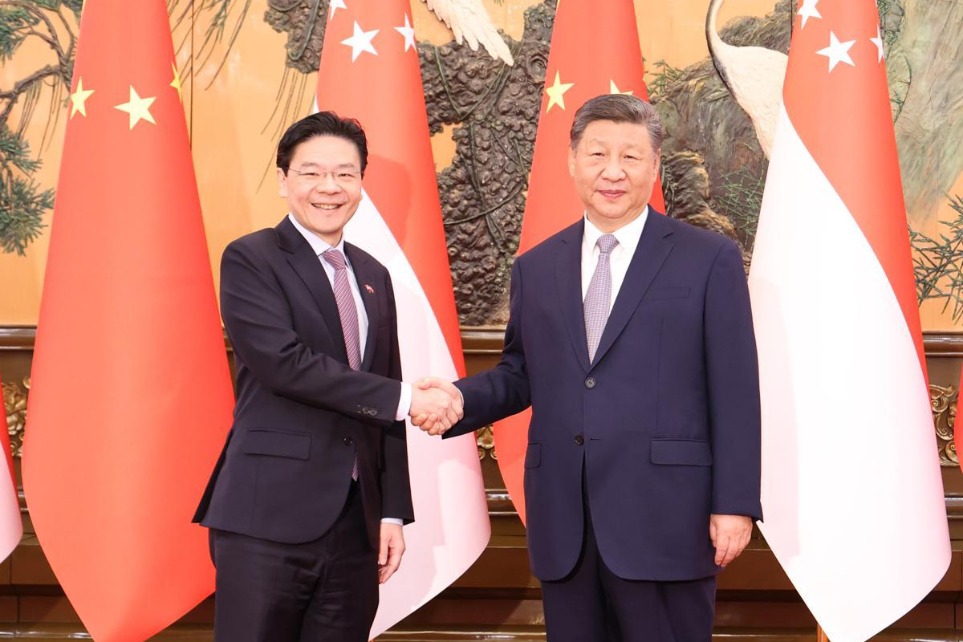Industries must smarten up


The industries with the highest digitalization levels are proving to be the most resilient during the pandemic
The digital economy is real-time, online and easy to be located. These features have enabled it to play a prominent role in the fight against the novel coronavirus. And its application is one of the reasons why East Asian countries have so far better controlled the pandemic than Europe and the United States.
Internet tools have played a positive role in China's COVID-19 prevention and control work. Since human-to-human contact is the main transmission channel for the novel coronavirus, health QR (Quick Response) codes is widely used in China as a pass for people to travel between different localities. This has safely managed people's movement to some extent. Over 10 provinces and municipalities now recognize each other's health QR codes, which means that people with a green code issued by one of these localities can travel within all these places without having to undergo 14 days of quarantine.
Internet platforms are taking active actions to meet the special needs of prevention and control during the pandemic, for example, they have developed online maps and supply chain management tools. The maps provide real-time updates on places where there are new infections and people's travel histories, which are crucial to contain the spread of the virus and to identify prevention priorities. Internet logistics platforms have made notable improvements in optimizing supply chains, allocating materials, smart warehousing and contactless delivery, and have ensured smooth logistics at this special time.
The Republic of Korea, Japan, Singapore and China's Hong Kong Special Administrative Region and Taiwan face far more optimistic outlooks than European and the US. The emphasis on digital tools and their good utilization are major reasons for this.
Back in 2015, the ROK was heavily hit by Middle East respiratory syndrome (MERS) with nearly 17,000 people infected within two months. During MERS, the ROK developed tools to trace close contacts through cameras, credit card records and even GPS information from cars and cellphones. Digital tools have again played a big role in the country's fight against the novel coronavirus. Cellphones will vibrate to alert people when a new infection is confirmed, and websites and smartphone apps provide real-time reports on the travel records of people infected with the virus, and the locations where he or she took public transport and even whether the person wore a mask or not.
In contrast, the US and European countries have been more cautious in using digital tools because of information security, privacy protection and anti-monopoly concerns. However, the mounting pandemic pressure has pushed them to give digital tools and technologies a bigger role.
On April 12, Apple and Google announced they were partnering to add contact tracing technology into the IOS and Android systems and to enable public health authorities interoperability between devices using these two systems. This is the first time that the two tech giants have worked hand-in-hand in such a high profile way. The key to this program is interoperability between the IOS and Android systems to trace close contacts via Bluetooth technology. If the device owner has been in contact with a virus carrier, the device will send an alarm. What's important is that there are nearly 3 billion users of Apple's IOS and Google's Android combined, more than one-third of the world's population.
The economic fallout of COVID-19 has dragged all major indicators of the Chinese economy down. But to be specific, the pandemic's impact on industries differ. The tobacco and petrochemical industries, for instance, have maintained positive value-added growth, 6.9 percent and 2.1 percent respectively. These two are both highly automated and low labor-intensive. As for services, value-added growth of financial industries increased by 4.5 percent and information transmission, software and information technology services increased by 3.8 percent. These two are both online and highly intelligent. Since most people are self-isolating at home, their online time has soared. Per day online user time has increased dramatically on all the telecom operators.
In contrast, traditional industries have suffered a heavy shock from the black swan event and the industrial chains have proved quite fragile. The internet industries and those traditional industries with higher digitalization levels are proving to be the most resilient. When all of this is over and we reflect, it is imperative for traditional industries to push for the restructuring of industry chains. More application of intelligent technologies and the internet should be the major orientation of such restructuring, that brings a huge opportunity for the internet industry.
The current pandemic is a showcase for the great potential of digital tools. The advantages of the digital economy have become prominent during the pandemic. E-commerce retail's surge is quite eye-catching. From January to February, although total retail sales of consumer goods dropped 20.5 percent, online retail sales climbed by 3 percent in the same period. Of online retail sales, fresh products and health products saw the biggest increase. At the same time, consumption of nonessential items underwent a big drop with clothing down by 18.1 percent and less demand for electrical appliances.
The videoconferencing platform Zoom ranks first among all free apps in the Apple App Store. And in the past two months since its launch, Tencent Meeting's daily active users surpass 10 million, making it the most widely used videoconferencing tool in China. Tencent has also become the United Nations' global partner to offer comprehensive technical solutions for the 75th anniversary of the UN, which will be marked on Sept 21.
There are several priorities that need to be identified when transitioning to intelligent industry. First, leading companies should be encouraged to build industrial internet platforms. Second, the digital infrastructure which industries will rely on, such as 5G, the internet of things, intelligent terminals and sensors, needs to be put in place. Third, those industries with highly globalized supply chains should be prioritized to boost the development of the industrial internet. Last but not least, labor protection should be strengthened to buffer the shock from the application of intelligent technologies.
The author is a research associate at the Development Research Center of the State Council. The author contributed this article to China Watch, a think tank powered by China Daily. The views do not necessarily reflect those of China Daily.






























